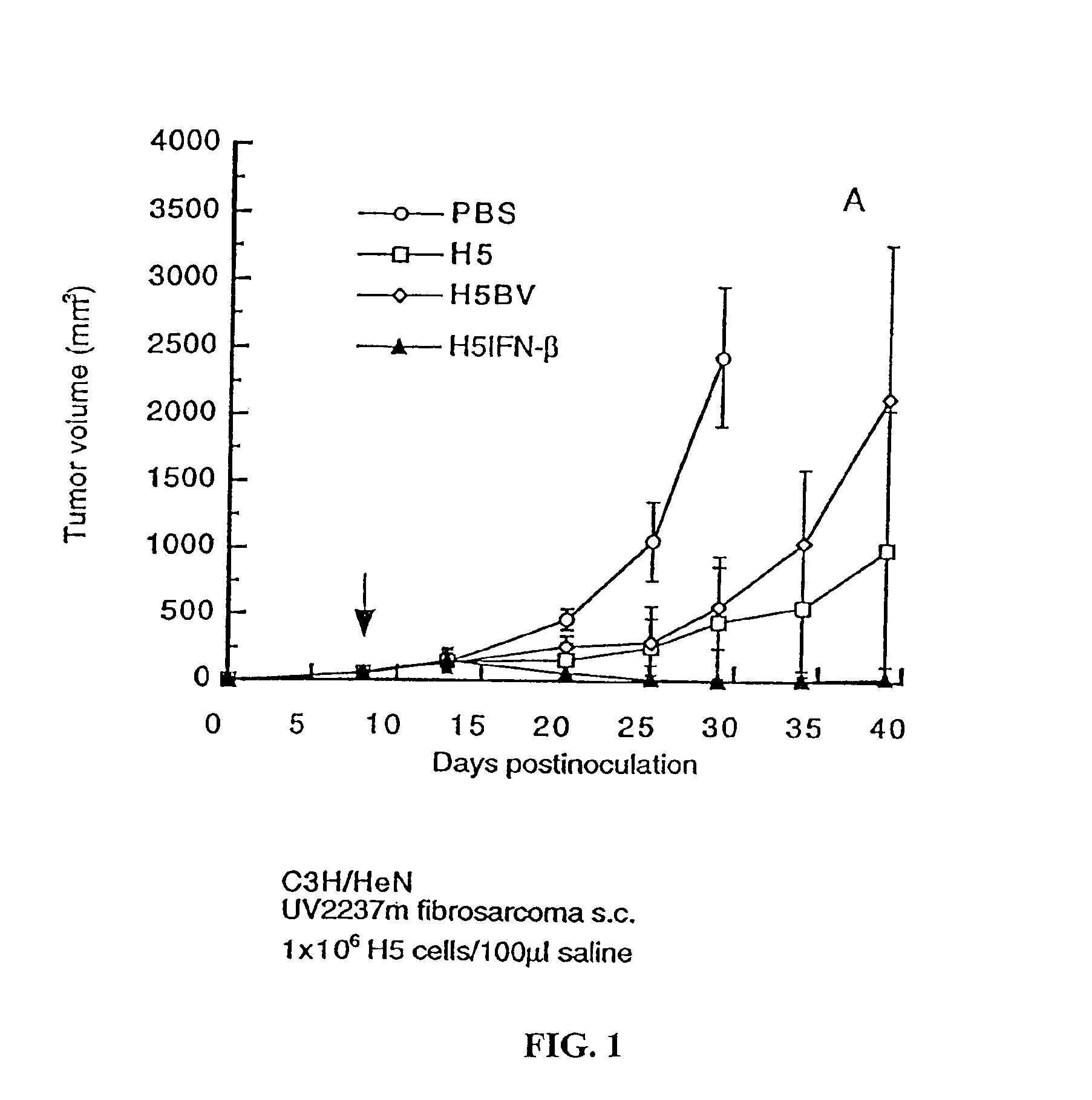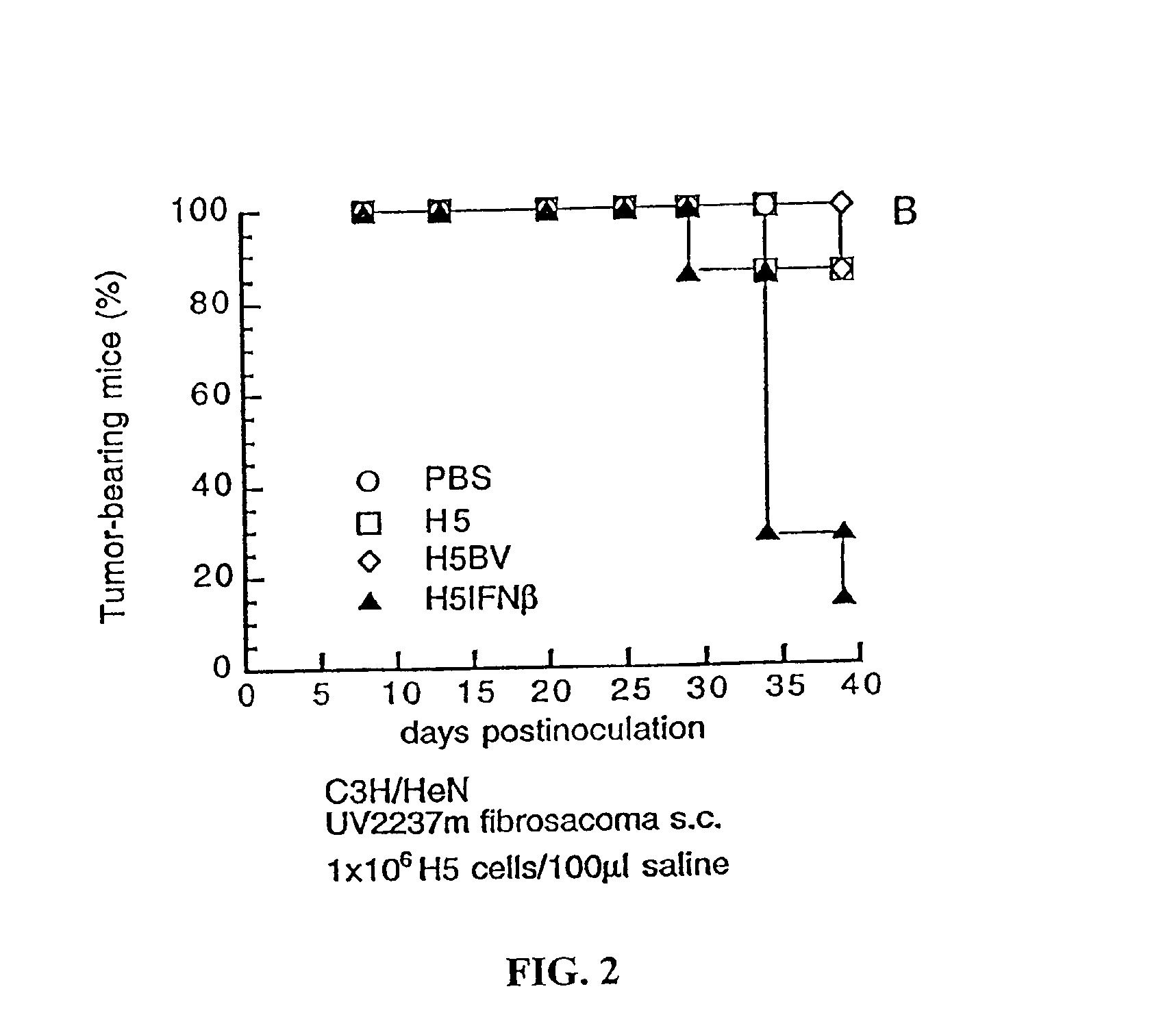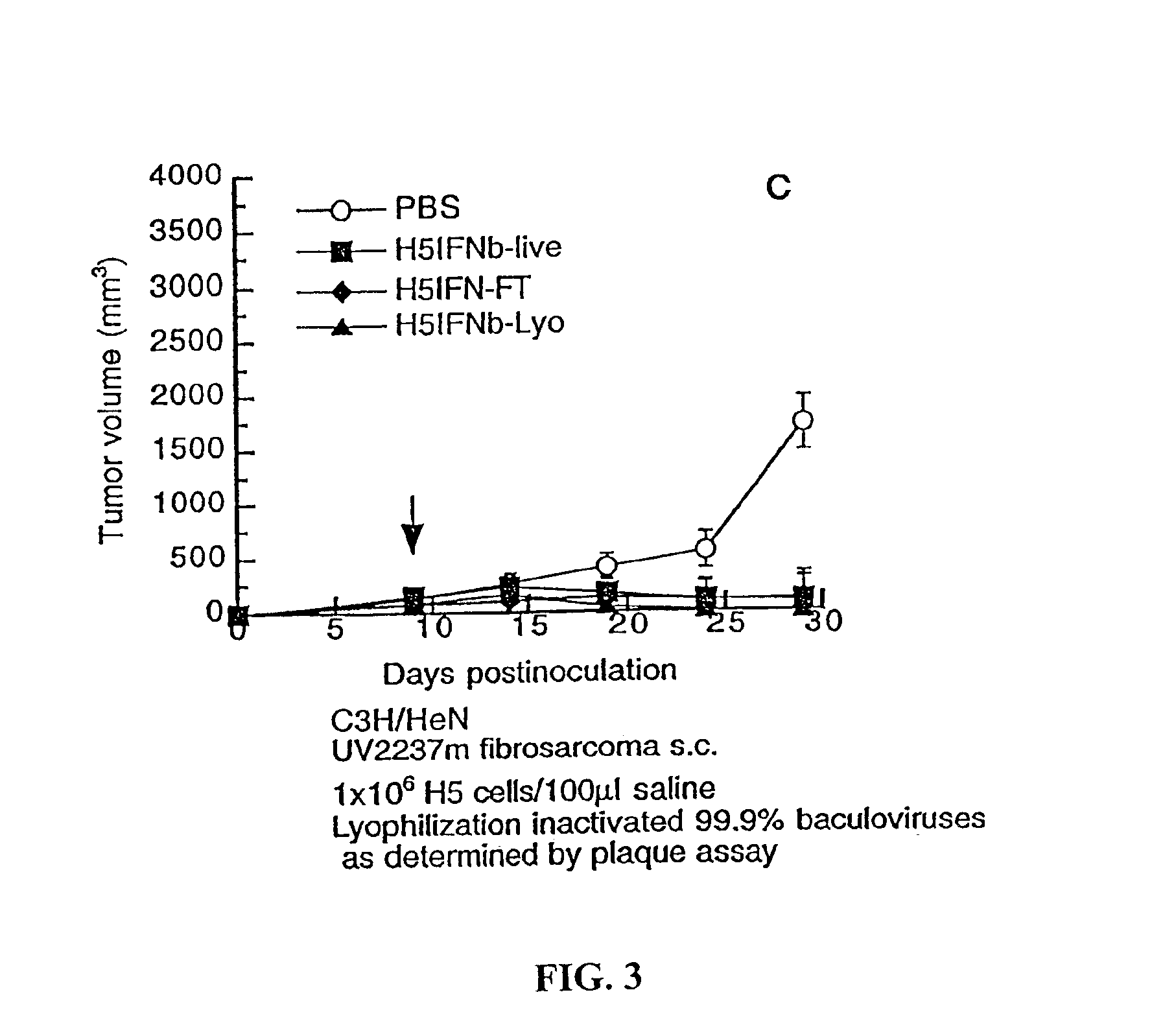Adjuvant preparation for the induction of specific immunity
a technology of specific immunity and adjuvant preparation, which is applied in the field of adjuvant preparation for the induction of specific immunity, can solve the problems of inability to generate an appropriate immune response, the immune response is often too weak to be of practical use, and the death of most cancer patients, so as to facilitate the expression of heterologous proteins
- Summary
- Abstract
- Description
- Claims
- Application Information
AI Technical Summary
Benefits of technology
Problems solved by technology
Method used
Image
Examples
example 1
[0161]One Injection of H5IFN-β Eradicated UV2237M Tumors
[0162]In initial experiments to assess the antitumor efficacy of H5IFN-β in vivo, live H5 cells with or without IFN-β were used. Complete eradication of tumors occurred in 70-90% of mice receiving one single intralesional injection of H5IFN-β, tumor progression in the rest of the mice was also significantly suppressed. Tumor regression was noted in only 10-30% of mice receiving H5 alone or H5BV, and tumor growth in the rest of mice was slightly or moderately inhibited (FIGS. 1 and 2). These results suggest that intratumoral injection of H5IFN-β cells can eradicate established tumors. Adenoviruses encoding IFN-β gene were also used to eradicate UV2237m tumors of an average diameter of 5-mm, at least 4 intratumoral injections of 5×108 PFU recombinant adenoviruses were needed for complete regression.
example 2
[0163]Live H5IFN-β Cells are not Necessary to Produce Regression of Tumors
[0164]Although members of the baculoviridae family only infect arthropods, baculoviruses are very easy to inactivate in vivo via fixation by the complement system. [125I]IdUrd-labeled H5 cells showed that 95% live H5 cells could not survive longer than 24 h in vivo. Studies were nevertheless designed to determine whether live H5IFN cells and live baculovirus were necessary to eradicate subcutaneous UV2237m tumors. Live, lyophilized, or frozen-and-thawed (by freezing and thawing the cells thrice) H5IFN-β cells (106 cells / injection) were administered intratumorally. There appeared to be no difference in therapeutic benefit in mice treated with live, lyophilized, or frozen-and-thawed H5IFN-β cells (FIG. 3). Other experiments showed that lyophilization kept IFN-β activity intact, inactivated more than 99.9% baculoviruses as indicated by plaque assay, killed all H5IFN-β cells checked after resuspension in PBS solut...
example 3
[0165]Optimal Dose of H5IFN-β Cells
[0166]The minimal and optimal doses of H5IFN-β required to eradicate established UV2237m tumors were next determined. C3H / HeN mice were subcutaneously inoculated with UV2237m cells to form solid tumors of 4-6 mm in diameter. The tumor-bearing mice were treated by a single intralesional injection of escalating doses equivalent to 105-5×106 cells / mouse, of lyophilized H5IFN-β cells as determined by protein concentrations. FIG. 4 shows that the treatment with H5IFN-β caused regression of the tumors in a dose-dependent manner. Complete eradication of tumors occurred in 80-100% of mice receiving 1×106, 2×106, or 5×106 lyophilized H5IFN-β cells. 2×106 or 5×106 lyophilized H5IFN-β cells / mouse seemed to have more therapeutic benefit than 1×106 lyophilized H5IFN-β cells. Therefore, the dose of 2×106 was chosen for further studies.
PUM
| Property | Measurement | Unit |
|---|---|---|
| diameter | aaaaa | aaaaa |
| doubling time | aaaaa | aaaaa |
| doubling time | aaaaa | aaaaa |
Abstract
Description
Claims
Application Information
 Login to View More
Login to View More - R&D
- Intellectual Property
- Life Sciences
- Materials
- Tech Scout
- Unparalleled Data Quality
- Higher Quality Content
- 60% Fewer Hallucinations
Browse by: Latest US Patents, China's latest patents, Technical Efficacy Thesaurus, Application Domain, Technology Topic, Popular Technical Reports.
© 2025 PatSnap. All rights reserved.Legal|Privacy policy|Modern Slavery Act Transparency Statement|Sitemap|About US| Contact US: help@patsnap.com



